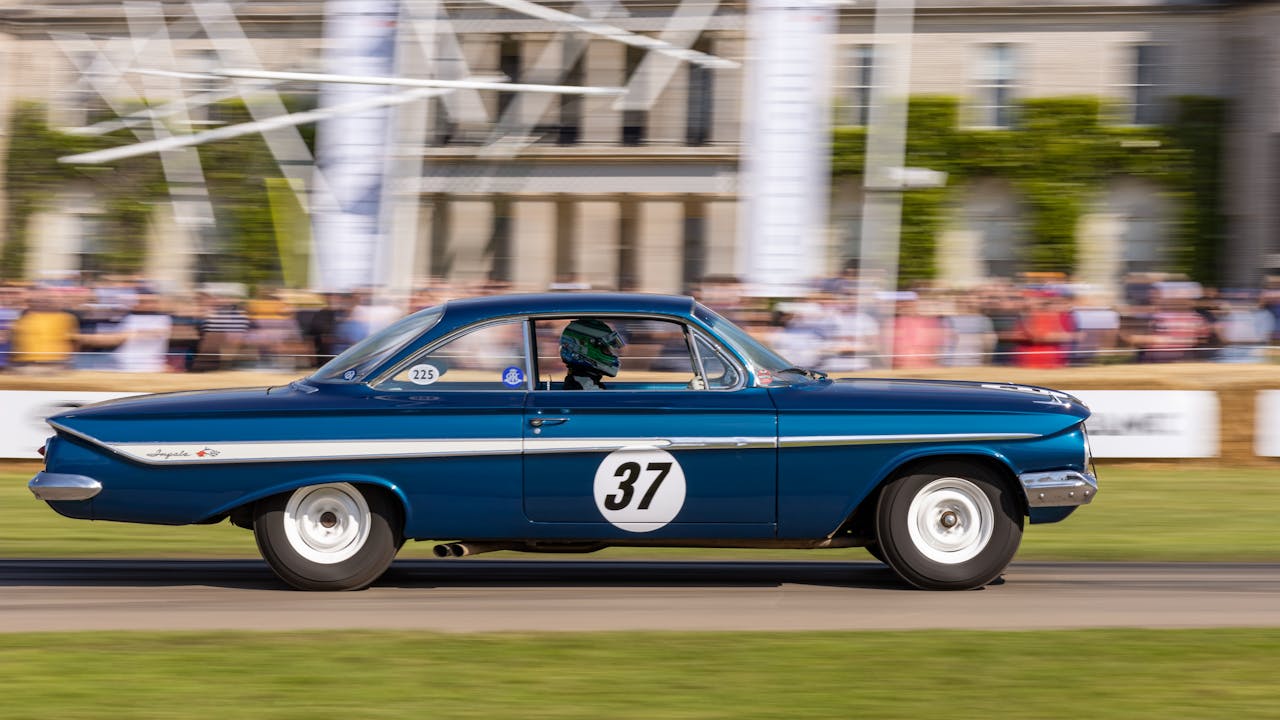
The Evolution of American Racing Cars
The evolution of American racing cars can be traced back to the early 1900s when automobiles started to appear on the streets. Although cars were initially invented as a means of transportation, people soon realized they could modify them to go faster and race each other. And when humans invent things, their inventions reflect the cultural, environmental, and practical factors. America’s vast distances and straight-line roads naturally asked for larger, more powerful engines compared to their European counterparts. This, in a nutshell, can be used to summarize the entire American car industry, and ultimately, the American racing cars evolution.
Early Years of American Racing Cars
It is minus 1 degree Celsius in Chicago. The year is 1895, and the city is hosting a special kind of race. H. H. Kohlsaat, the Chicago Times-Herald publisher, is offering a hefty prize of $5,000 USD to anyone who wins. The rules are simple – no horses. Contestants are to bring self-propelling vehicles, which at the time, didn’t even have a name, as the word automobile was not “invented” yet. J. Frank Duryea ultimately won the race, driving his self-made car for almost 8 hours, from Chicago to Evanston and back.
If someone were to ask you about one of the very first racing cars in American racing history, you would have every right to name Duryea’s car. It wasn’t until the first Indy 500 in 1911, however, that the sport of car racing truly took off and sparked the evolution of race cars.
As you would expect, the first race cars were primitive. The focus was on power and going faster, instead of aerodynamics and driver safety. The engine was placed in the front, with a lightweight chassis and body. Open cockpits were common, leaving drivers exposed to the elements and making them vulnerable in case of an accident.
How NASCAR Sparked the Muscle Car Evolution
NASCAR’s roots lie in the moonshine running days of the Prohibition era, where drivers raced their souped-up cars to outrun law enforcement. These cars were ordinary stock cars with some modifications to make them faster, hence the name “stock car” racing.
During this time, some of the most iconic, classic racing cars were born. One example is the 1949 Oldsmobile Rocket 88, often regarded as the first real NASCAR race car. It had a powerful V8 engine and could go from 0 to 60 mph in just nine seconds.
As NASCAR grew in popularity, so did the demand for more powerful and faster cars. This led to manufacturers creating high-performance versions of their already existing models for consumers, sparking the evolution of muscle cars.
The Golden Era of American Racing Cars
The 60s and 70s are widely considered to be the golden age of American cars in general. It was a time of innovation and experimentation, leading to the creation of some of the most iconic race cars in history.
1960 Chevrolet Impala and 1964 Plymouth Belvedere are two notable examples from the early 60s. The late 60s brought a 1969 Dodge Charger Daytona, an instantly recognizable classic. Its aerodynamic design and powerful engine made it unbeatable on the track. Other notable cars from this era include the 1970 Plymouth Superbird, nicknamed “The Winged Warrior,” and the 1969 Chevrolet Camaro Z28, often called a “pony car.”
Let’s not forget the legendary Ford GT40, designed specifically to take on the legendary Ferrari in the 24 Hours of Le Mans race. Carroll Shelby took over his development and made the GT40 into a world-beater, winning the 24 Hours of Le Mans four consecutive times from 1966 to 1969. It was an impressive feat that solidified American racing cars as a force to be reckoned with on the international stage.
The Modern Era of American Racing Cars
Modern-era American race cars are direct descendants of the iconic cars from the 60s and 70s. The only difference is in terms of technology and design. However, the core principle is the same. Americans prefer big cars with big engines, and their racing cars reflect that.
The most notable mentions in the modern era are Ford GT, Dodge Viper, and Chevrolet Corvette. All of these cars have a strong racing pedigree and are known for their high-performance capabilities. They continue to dominate the racetracks today, showcasing American engineering excellence.











